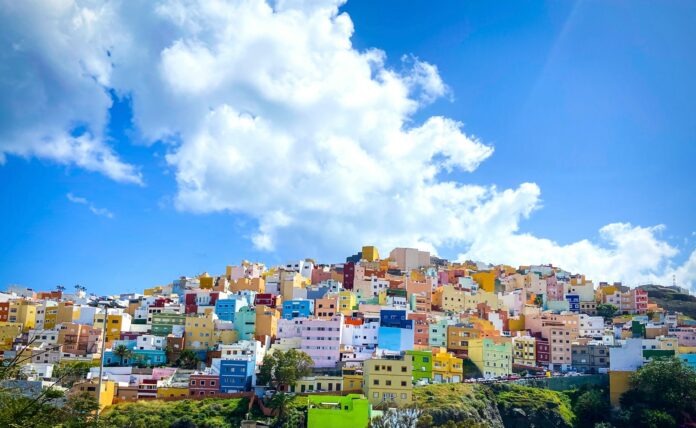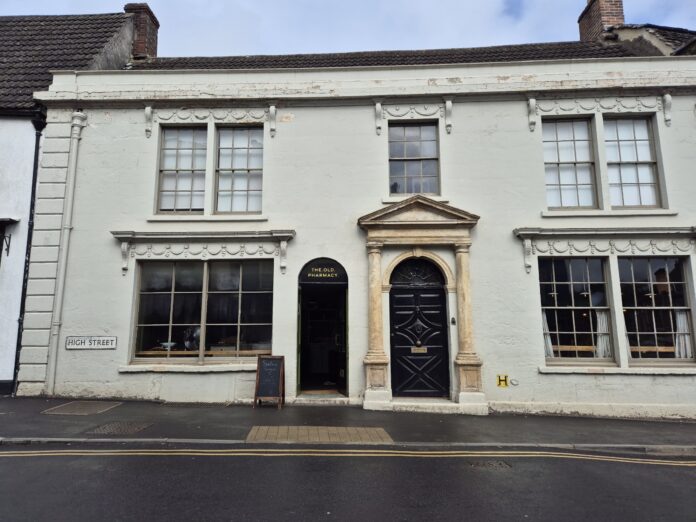2025 looks set to be a bumper year for tourism in Turkey, with the country’s ‘Hello Turkiye’ campaign taking flight and tourist numbers predicted to soar, with numbers already up 70% since the pandemic.
On top of that, Turkey this year is set to take over France as Europe’s second most visited country. Yep, we said 2025 is going to be a bumper year here.
Of course, the majority of tourism in the country starts in the glorious capital Istanbul, a city as rich in diverse culture and history as you’ll find anywhere on the planet. Straddling Europe and Asia, and enjoying a unique vibe all of its own, it’s also one of the biggest cities in the world, and certainly one of its most influential, with must-see attractions, thought-provoking museums and historical monuments all over the city to enjoy.
Whether you are travelling with family, or you are taking your first solo trip, from the moment you leave the airport, you’ll find so much to entertain, stimulate and arouse here. To inspire your itinerary, here are 11 places to explore the culture and heritage of Istanbul in 2025.
Hagia Sophia
This building was one of the biggest cathedrals in the world for almost a thousand years, and it’s no wonder people from around the world travel to Istanbul to see this. In the 15th century, it was transformed into a mosque and then a museum in 1935, before being returned to mosque status this year; a colourful history, indeed. Before all of this, it was known as the centre of the Eastern Orthodox Church.
Standing tall over the city (though not quite as towering as Istanbul Sapphire, one of the world’s tallest skyscrapers), to say Hagia Sophia is enormous is an understatement. With its massive dome and walls embellished with Byzantine mosaic portraits of past emperors and representations of Christ, you can easily spend a morning or afternoon here, just taking in the majesty of the structure and its cultural significance in the country.
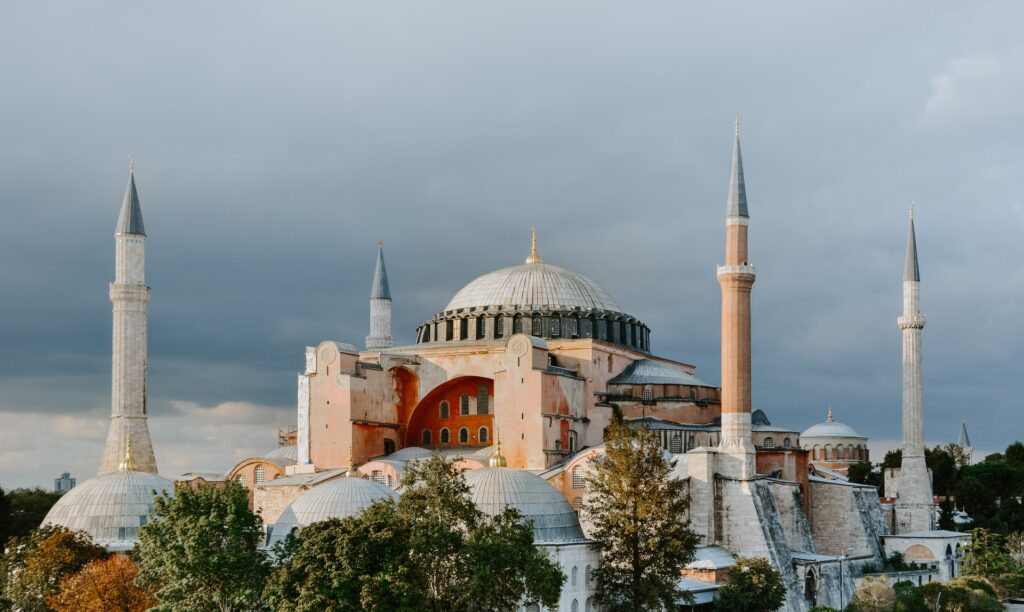
Topkapi Palace
Topkapi Palace, a beautiful, ornate structure and museum overlooking the Bosphorus, served as the residence for the Ottoman sultans in the 15th and 16th centuries and has so much to offer visitors. Open every day except Tuesdays, the large-scale rooms and chamber houses are open to the public and wandering them is actively encouraged; pay particular attention to the conversation-starting imperial collections like the 86-carat Spoonmaker’s Diamond.
There are four back-to-back courtyards surrounded by huge walls, though there is only one accessible to the public. In the other courtyards, only official visitors and members of the court can enter the space. Topkapi Palace still upholds its original layout from four centuries ago to this day and as such, it’s a historical site you do not want to miss.
Read: The IDEAL 2 week interrailing itinerary from London to Istanbul
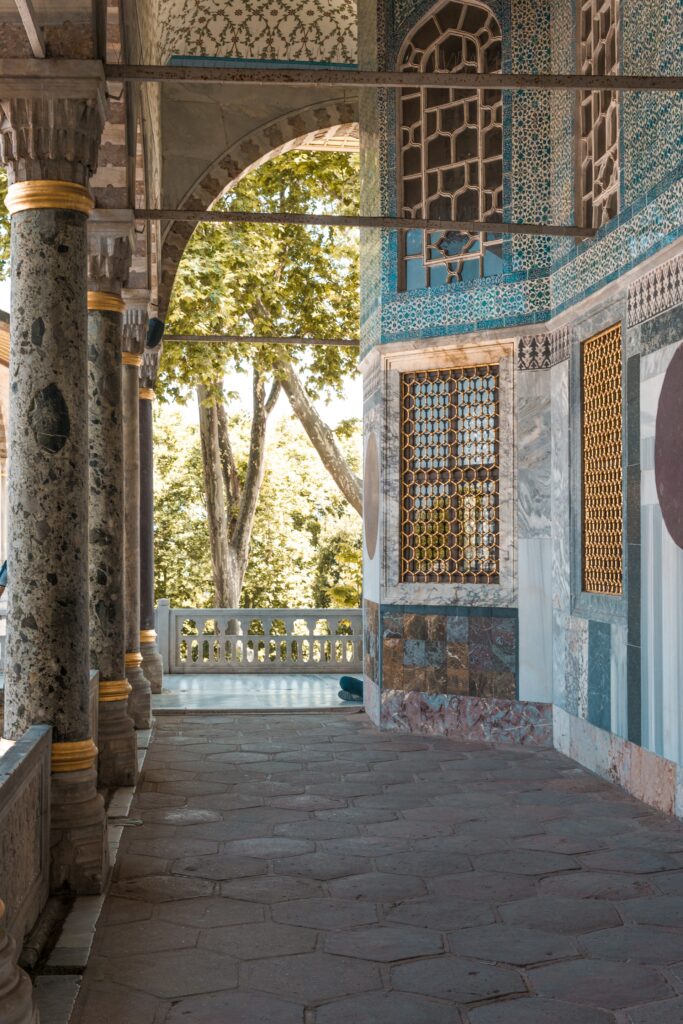
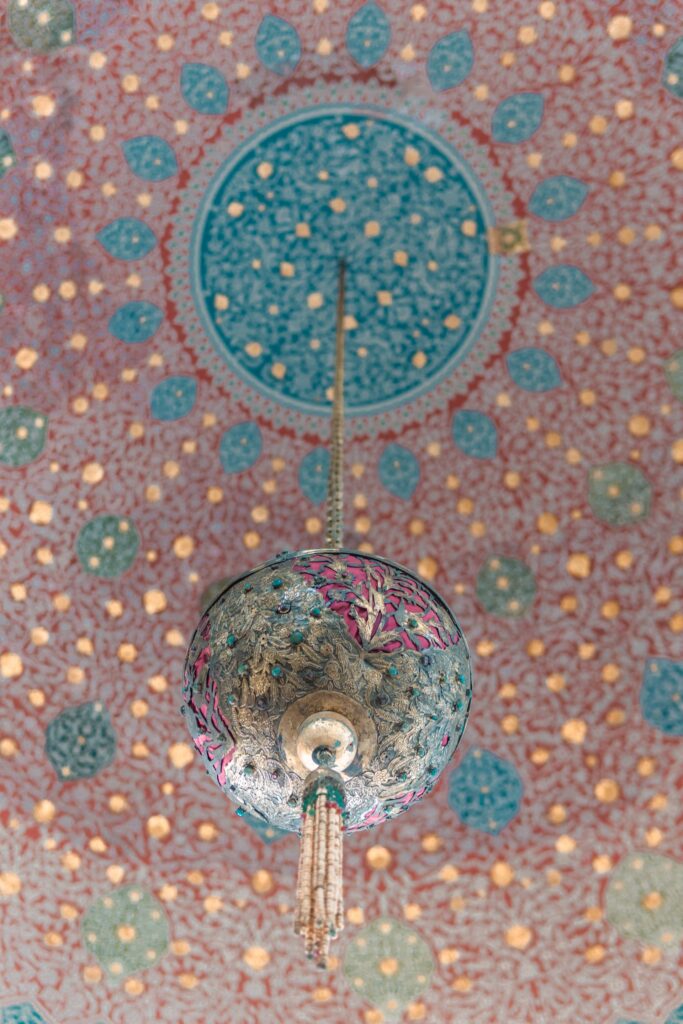
The Bosphorus
No visit to Istanbul would be complete without experiencing the magnificent Bosphorus strait, the natural waterway that literally divides Europe and Asia. This iconic waterway has been the lifeblood of Istanbul for millennia, and today offers visitors countless ways to experience its majesty.
The best way to appreciate the Bosphorus is, naturally, from the water itself. Whether you’re looking for a Bosphorus cruise on a private yacht, a romantic sunset tour, or a full-day excursion to the Black Sea, there’s an option to suit every preference. Many of these experiences depart from Bebek or Kabataş, and as you sail, you’ll witness the city’s most stunning waterfront attractions, including the Dolmabahçe Palace, Rumeli Fortress, and the magnificent Bosphorus Bridge.
For those who prefer to stay on terra firma, the waterfront neighbourhoods offer their own delights. The Ortaköy district, with its baroque mosque and bustling weekend artisan market, is particularly charming. Here, you can sample the famous kumpir (stuffed baked potatoes) whilst watching the boats go by. Meanwhile, the Bebek area, with its luxurious yalıs (waterfront mansions) and sophisticated cafés, offers a glimpse into Istanbul’s more refined side.
Don’t miss the opportunity to dine at one of the many fish restaurants along the shore, particularly in areas like Arnavutköy or Sarıyer. The catch of the day, served with rakı (the local anise-flavoured spirit) and meze, tastes even better with the spectacular water views and the gentle sea breeze.
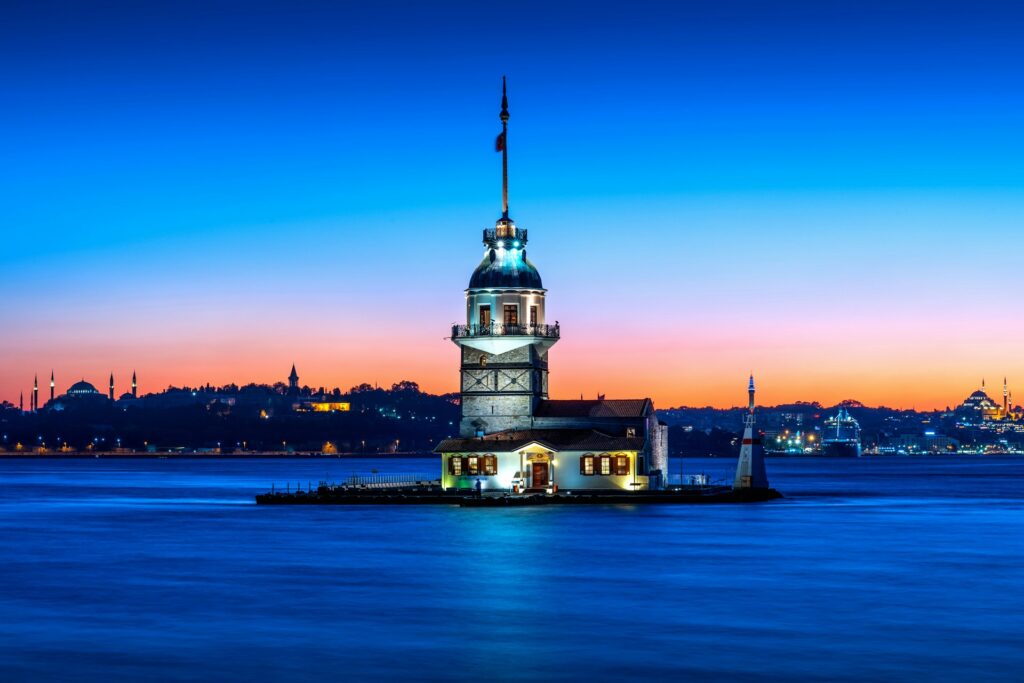
Blue Mosque
The Blue Mosque, also known as the Sultanahmet Mosque, is another historical must-see which will enlighten you on Istanbul’s culture and heritage immensely. With its instantly recognisable, iconic blue interior, it was built during Ahmed I’s reign in the 17th century and still stands still and resplendent to this day.
Each wall in the monumental mosque is embellished with 20,000 hand-painted blue tiles, and it’s a striking sight to behold, regardless of your faith. But the azure anointed walls aren’t the only reason why the interior stands out; natural light from the mosque’s 200 windows filters through in a magical, mystical way. The mosque’s six minarets, instead of the usual two, are another striking feature.
Just be cognizant of when you attend, as Sultanahmet is still a functional mosque and visiting during prayer isn’t permitted.
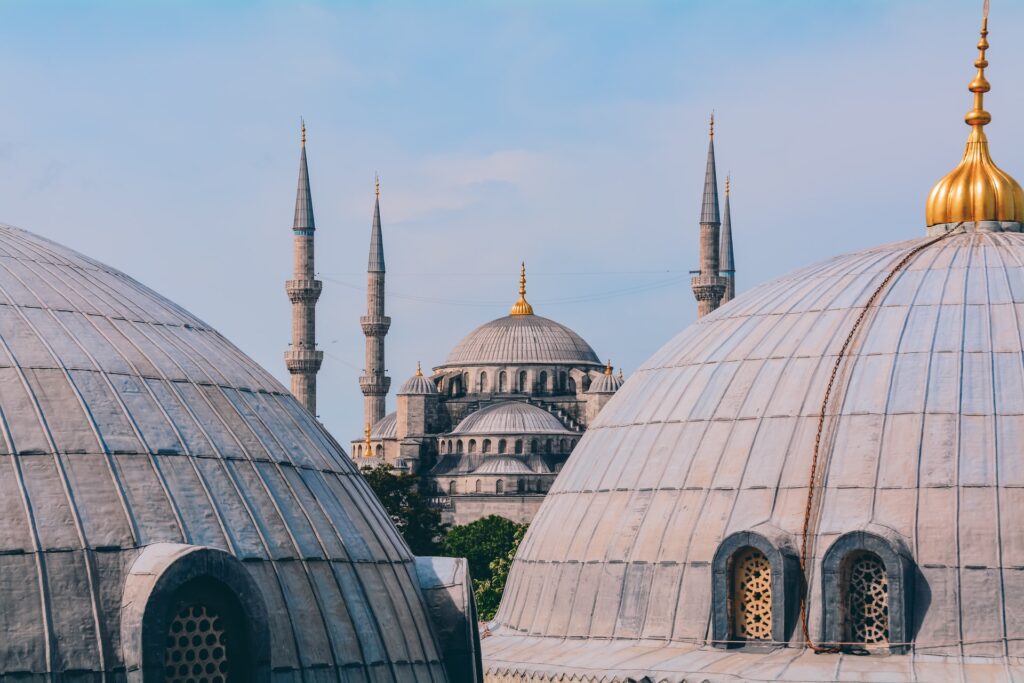
Basilica Cistern
To take a deep dive into a very deep past in Istanbul, you have to visit Basilica Cistern, which sits underground, close to Hagia Sophia. In Turkish, the Basilica Cistern is known as Yerebatan Sarnıcı and was built in the 6th century by Emperor Justinian I. He used it to house 80,000 m3 of water and ration it out to other palaces in the area. This water system is a complex and intricate attraction with hundreds of time-honoured Ionic and Corinthian columns.
You can even go below the ground to check out some of the underground compounds. One of the most noteworthy things to see here is the two-column bases, adorned with the upside-down head of Medusa. As you pass through the columns, you’ll feel water dripping from overhead, and history all around you.
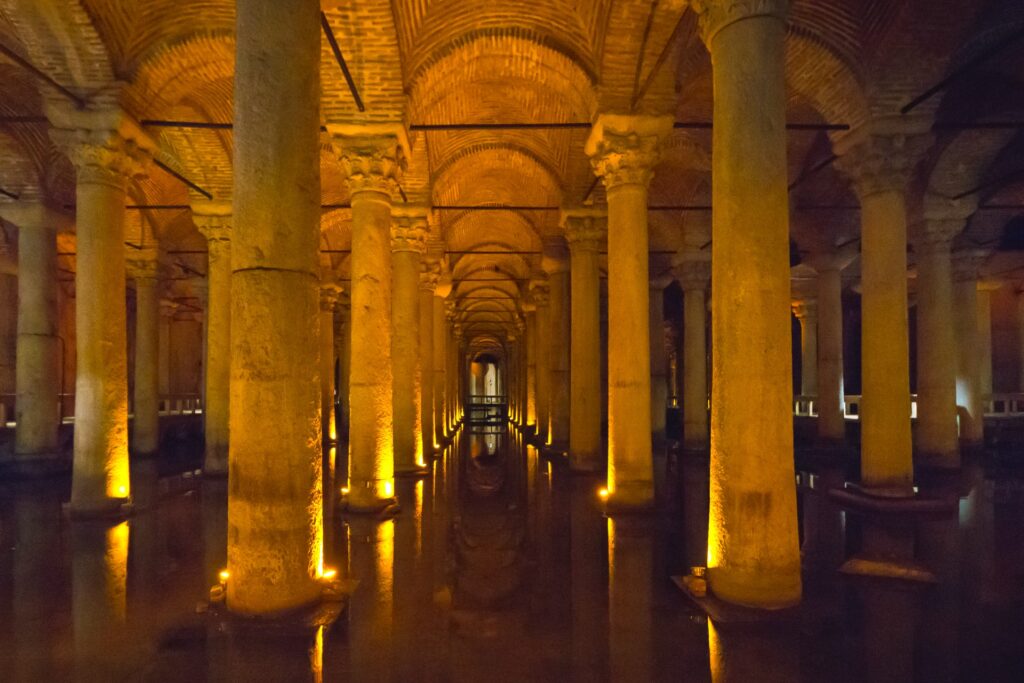
Istanbul Archaeological Museum
This is known as Turkey’s first museum and is actually part of a collection of three (the others being the Museum of the Ancient Orient and the Tiled Pavillion), all housed in Gülhane Park, which is close to Topkapi Palace.
Founded in 1891, it’s still perhaps Istanbul’s most extensive collection of artefacts, with over a million (!) pieces to admire. It’s huge, so it’s wise to arrive early; you’ll need an entire day to get the most out of this tourist attraction.
Established in the late 19th century, the Archaeology Museum is home to Ancient Greek, Roman and Turkish artefacts. There are even some heirlooms from places like the Balkans, Africa, Mesopotamia and the Middle East. If you want to get familiar with the city (and country’s) unique, complicated past, then it’s here you should head.
Gülhane Park
Actually, let’s mention Gülhane Park in its own right, as is one of the biggest parks in the historic city, and a great place to escape to hustle and bustle of this furiously paced metropolis. Sitting proud in the city’s Eminönü district, and overlooking the Bosphorus strait and Marmara sea, the ideal time to come here is during springtime when you can see hundreds upon hundreds of tulips blooming, lending the place a hopeful, optimistic air in tune with Istanbul’s energy. The breeze coming off the water and shade lent by trees (which date back several centuries) make the park one of the best places in the city to cool off.


Grand Bazaar
If you love going shopping for trinkets and souvenirs unique to a city, then the Grand Bazaar is definitely the tourist attraction for you. Indeed, Grand Bazaar is one of the world’s biggest and oldest covered markets, home to hundreds of shops dispersed across too many streets to count (60ish, actually). It’s so big in fact, that it has its own prayer rooms, police station and pharmacy. Keep in mind that when shopping here, the name of the game is bargaining and bartering; all part of the experience when visiting Grand Bazaar’s 4000 stalls and shops. Of particular interest here are Turkish teas, Turkish delight and the country’s intricate, unique jewellery and ceramics.
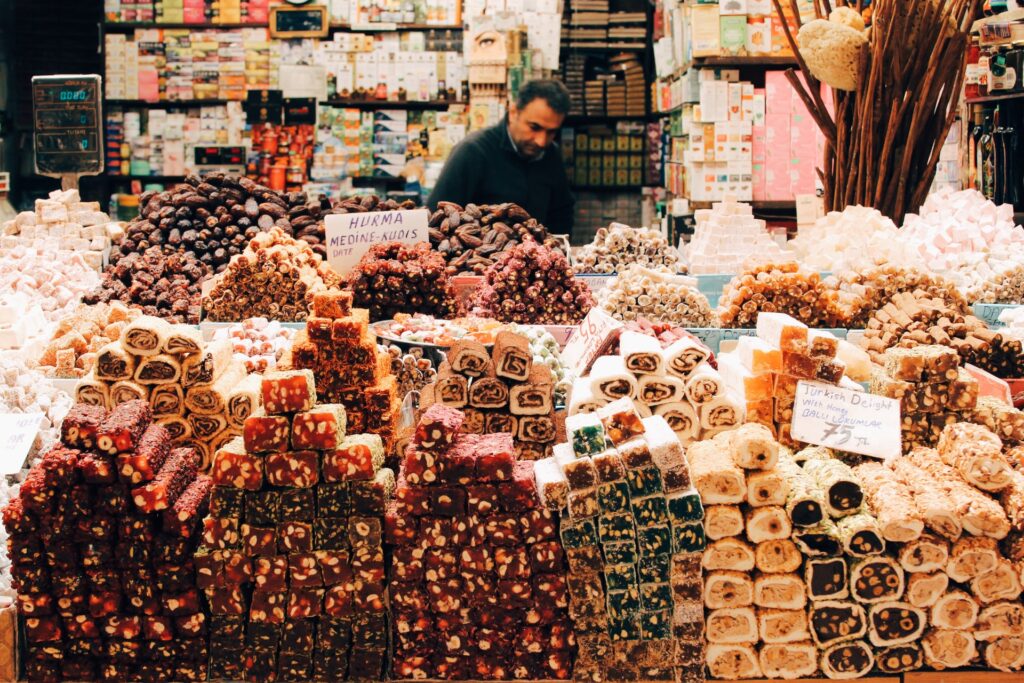
Spice Bazaar
Treat the gourmet chef in you and indulge yourself with hundreds of stalls that sell spices, sweets, teas, dried fruits and other goods at the Spice Bazaar. Smaller than the Grand Bazaar, this shopping hub is also a great place to buy your family and friends souvenirs from your trip relating to Turkey’s incredible cuisine. It’s not just about food here; don’t be afraid to try the many traditional Turkish herbal remedies sold in the market, which are believed to help things like memory, immunity, digestion and overall health.
Finish your tour of this great market with a glass of pickle juice (yep, you read that right) in the market where locals often stop off for a reviving sup of the sour liquor. Often accompanied by balik ekmek (fish sandwiches) straight from Bosphorus, this is a refreshing, energising Turkish tradition we’d love to see become popular in the UK!
The ‘Asian Side’
Speaking of pickle juice, another place to sample it is across the river at Meşhur Özcan Turşulari, near to the Kadikoy underground station. It’s one of the most popular pickle vendors in town and has been selling the stuff since 1935.
The Asian side (or the ‘other side’) itself is a multicultural mix of Ottoman palaces, galleries, lively cafes and bars with a hipster vibe. Be sure to explore the Kadıköy district and its cool Moda neighbourhood in particular to experience a more laid back side to Istanbul and its culture.
Dolmabahçe Palace
Completing our list is the majestic Dolmabahçe Palace, a stunning example of Turkey’s transition into the modern age while still holding onto the grandeur of its past. Built in the 19th century, this palace served as the administrative centre of the Ottoman Empire in its final years and was home to the last of the Ottoman Sultans.
As you wander through its opulent halls and richly decorated rooms, you’ll be transported back to a time of lavish lifestyles and political intrigue. The palace’s architecture is a fusion of various European artistic influences integrated with traditional Ottoman design, making it a unique cultural gem. The grand ceremonial hall, with its 4.5-tonne chandelier, is a sight to behold, while the palace’s extensive collection of paintings, furniture, and decorative arts offers a glimpse into the imperial lifestyle.
Dolmabahçe Palace is not just a symbol of Istanbul’s imperial past but also a reminder of the city’s continuous evolution, embodying the spirit of ‘Hello Turkiye’ as it opens its doors to the world.
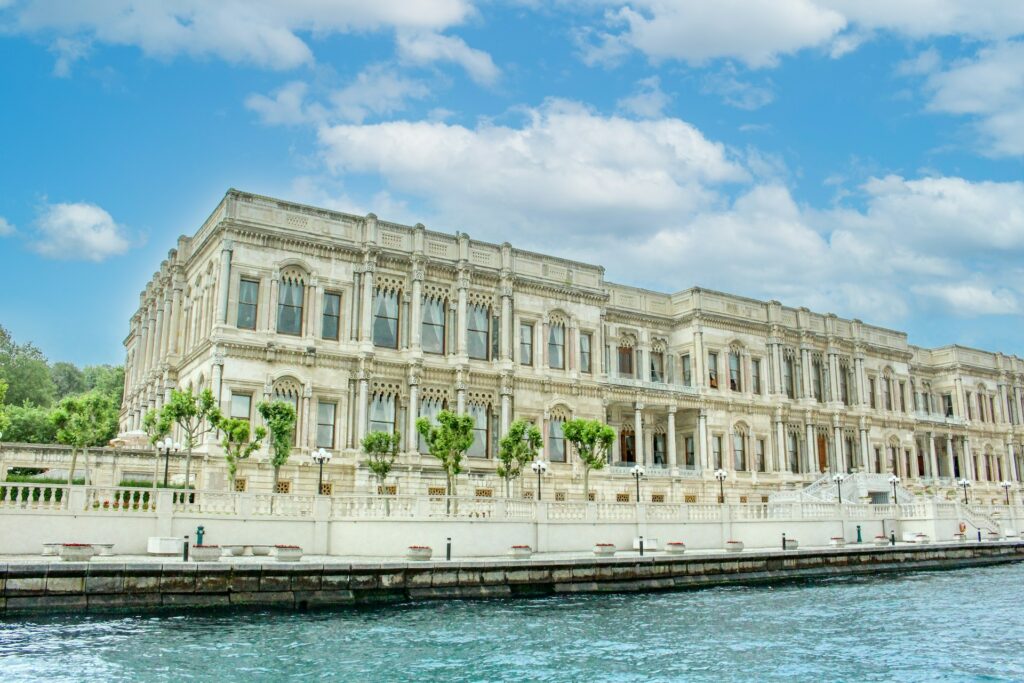
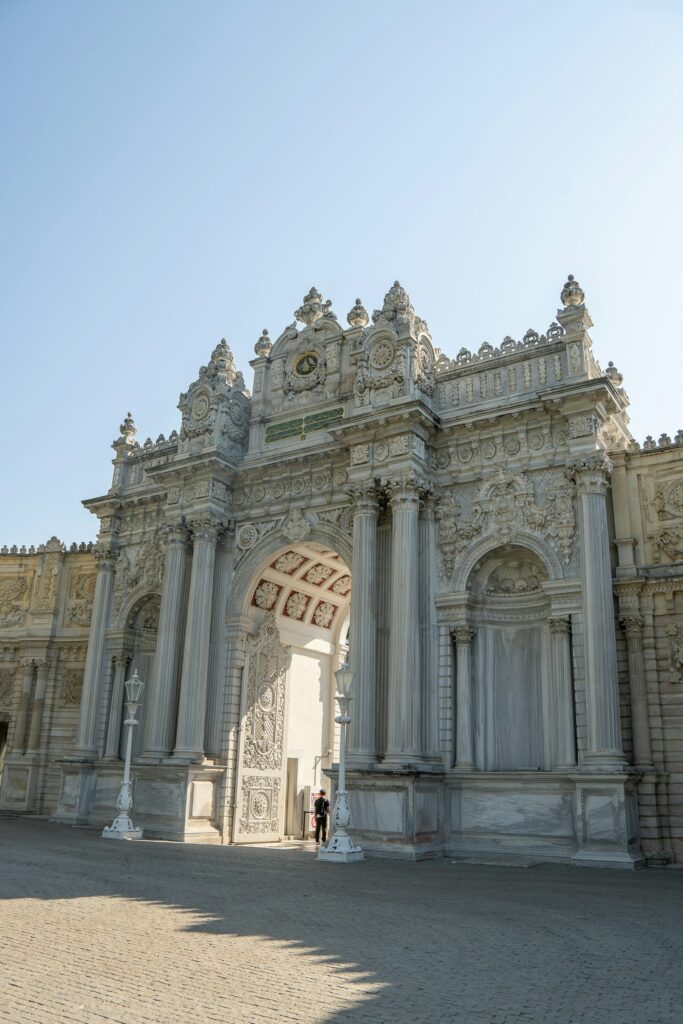
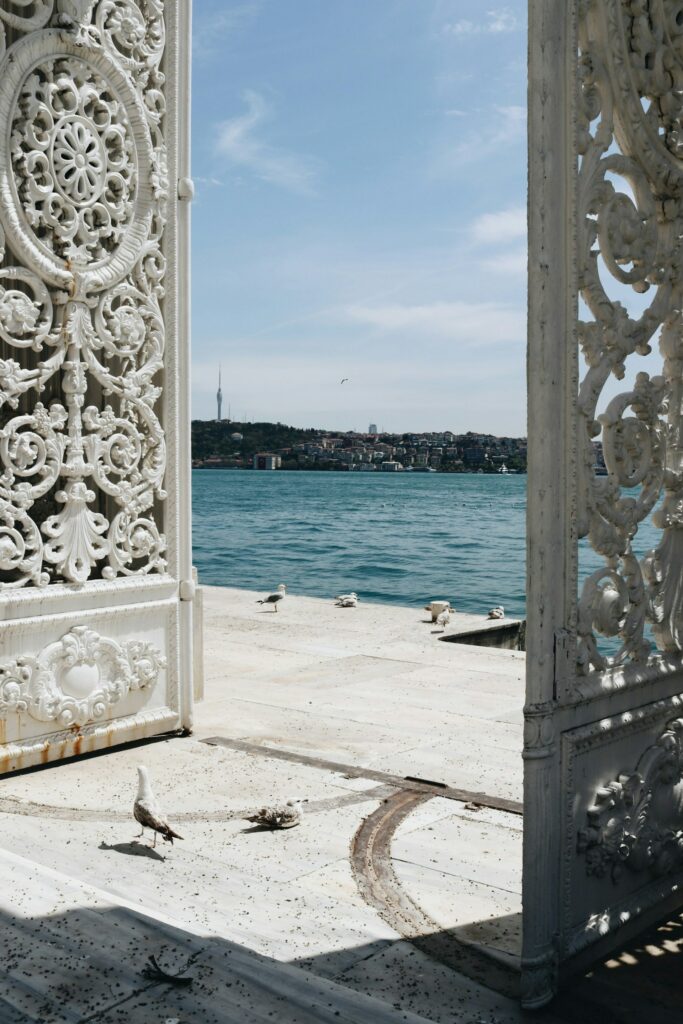
How Easy Is It For Brits To Move To Turkey?
For British nationals considering a move to the enchanting city of Istanbul or any other part of Turkey, the process is relatively straightforward, thanks to the warm bilateral relations between the UK and Turkey. However, there are some essential steps and legal requirements to be aware of.
Visa Requirements
Initially, British tourists can enter Turkey without a visa for short visits of up to 90 days within a 180-day period. For those looking to stay longer, whether for work, study, or retirement, you will need to apply for a visa and/or a residence permit.
Residence Permits
After your visa-free 90 days, if you wish to stay longer, you must apply for a residence permit. The Directorate General of Migration Management (DGMM) handles all applications, which can be done online through their e-residence system. Types of residence permits include short-term, family, student, and long-term.
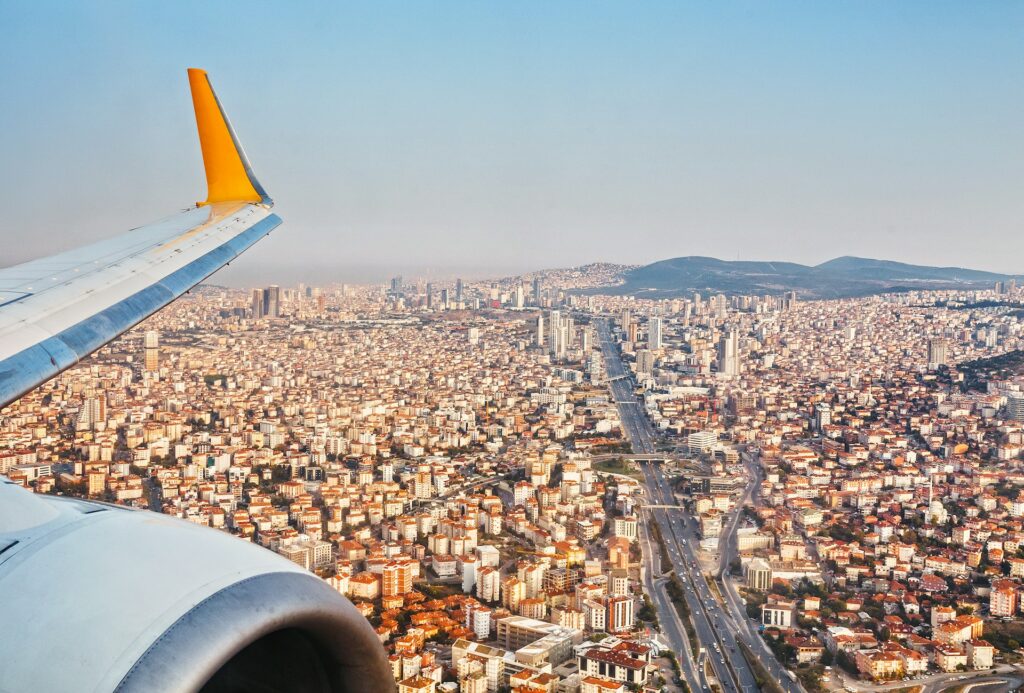
Short-Term Residence Permit
This is suitable for those who wish to stay for longer than 90 days but do not intend to work. It’s often used by retirees or those who can support themselves financially without working in Turkey. You’ll need to provide proof of sufficient funds, health insurance, and a place to stay.
Work Permits
If you plan to live and work in Turkey as an expat, you’ll need a work permit, which also serves as your residence permit. Your employer in Turkey typically initiates this process by applying to the Ministry of Labour and Social Security. You can then enter Turkey with a work visa and complete the process.
Long-Term Residence Permit
After living in Turkey for at least eight years without significant interruption, you may be eligible for a long-term residence permit. This gives you more rights, similar to those of a Turkish citizen, but you must prove you have not received any social assistance in the past three years and have sufficient income to support yourself.
Buying Property
Purchasing property here can also lead to a residence permit. The process is relatively investor-friendly, with apartment prices in Turkey around 65% cheaper than in the UK. There is even a pathway to citizenship for those who invest a certain amount in real estate.
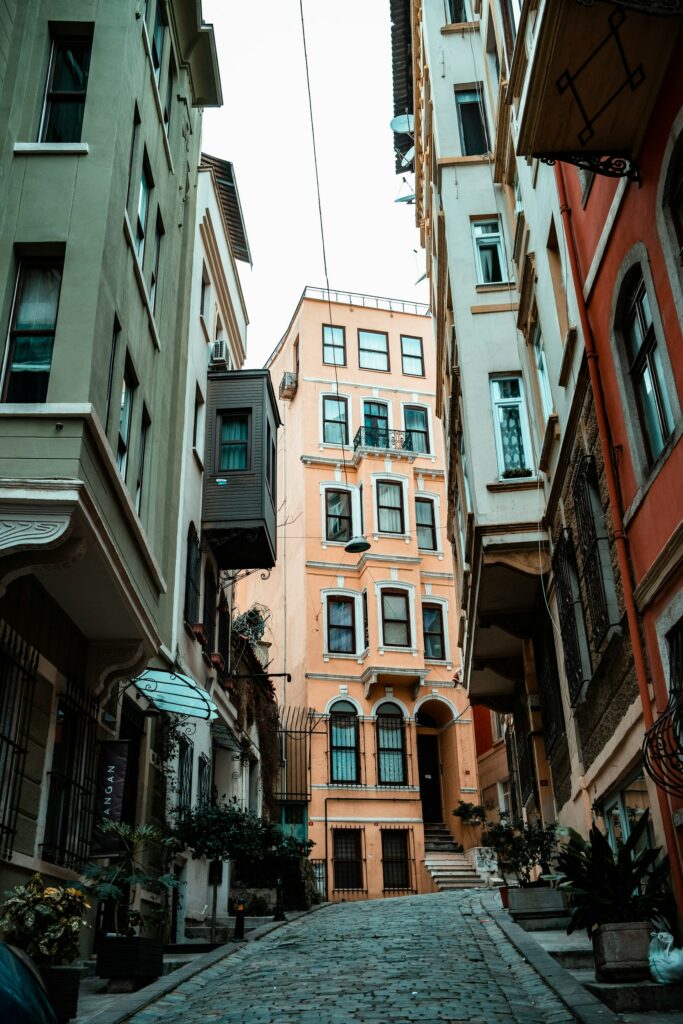
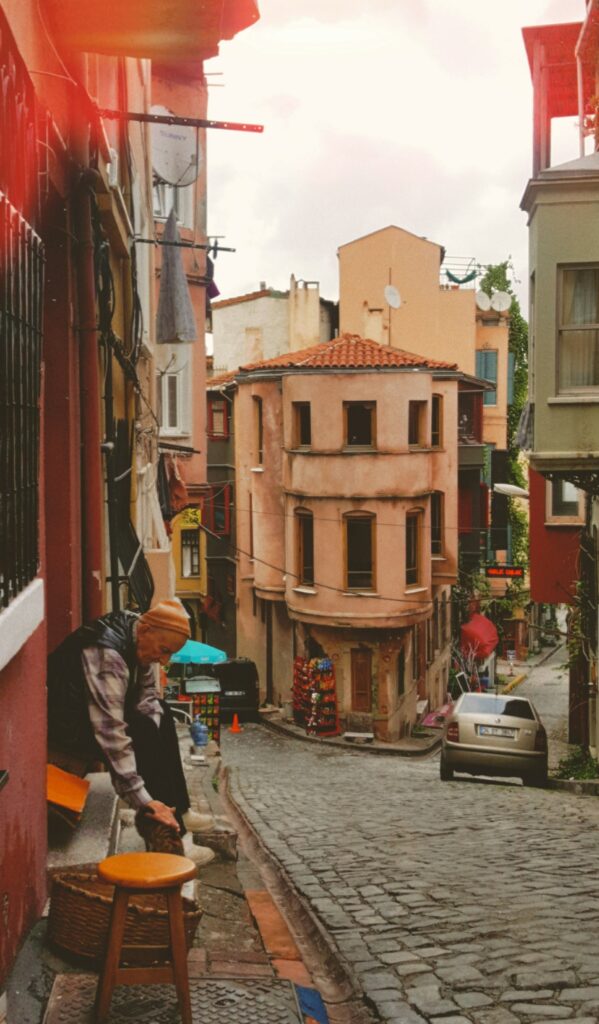
Healthcare and Insurance
All expatriates are required to have health insurance coverage to obtain a residence permit. You can either pay into the Turkish state health system (SGK) or purchase private health insurance.
Integration and Language
While not a legal requirement, learning Turkish will significantly enhance your experience and ease your integration into Turkish society. There are numerous language courses available in Istanbul and other cities.
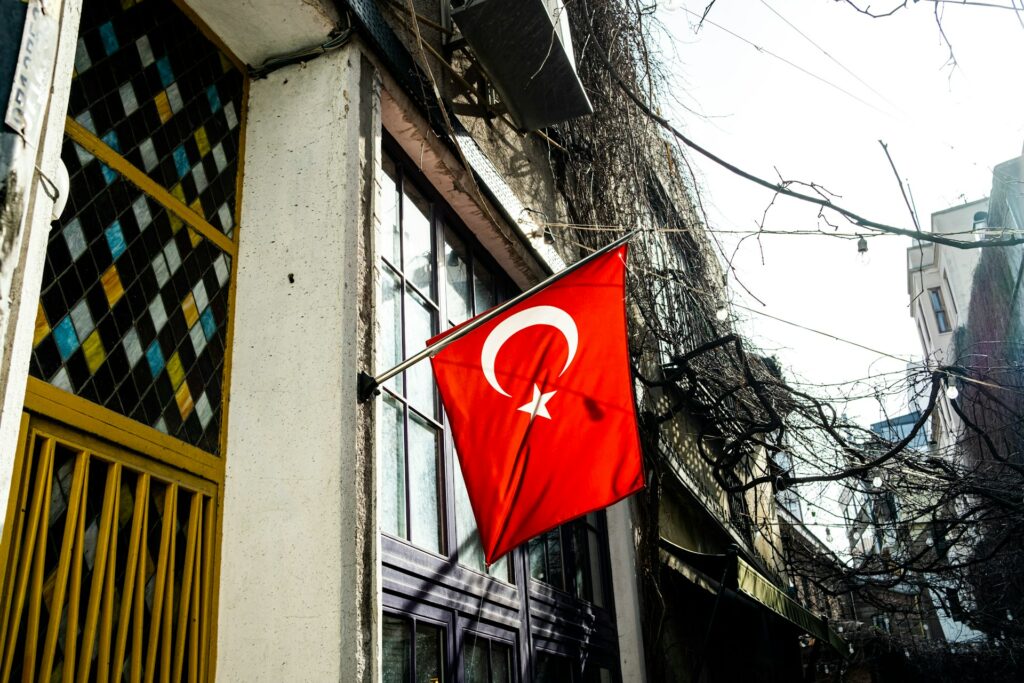
Retirement in Turkey
Turkey is becoming an increasingly popular retirement destination for Brits due to its lower cost of living and Mediterranean lifestyle. As a retiree, you would apply for a short-term residence permit and show proof of a pension or other regular income.
Legal and Professional Advice
It’s highly recommended to seek legal and professional advice when moving to Turkey. Regulations can change, and having a professional guide you through the process can ensure you meet all the requirements and choose the best type of permit for your situation.
Indeed, while moving to Turkey requires some administrative work, the process is well-established and facilitated by the Turkish government’s desire to attract foreign residents and investors. With the right preparation and support, Brits can find the transition to life in Turkey to be a smooth and rewarding experience.
The Bottom Line
As you embark on your journey through Istanbul, let these 10 destinations be your guide to a city that is as timeless as it is dynamic, as rooted in history as it is forward-looking. Welcome to Istanbul, where every visit is an encounter with the soul of Turkey.

